Japan is a country well_known for its unique culture, beautiful scenery, and deep historical significance. Although spots such as Tokyo, Kyoto, and Osaka are famous around the world, there are tens of thousands of hidden gems waiting to be discovered.
On my last trip to Japan, I explored some of the less touristy places in Japan 15 less touristy places in Japan to find a more authentic, peaceful, and unique experience. Today, I’m happy to detail my experiences at these lesser-known spots to prove to you that you can experience them, too.
15 Less Touristy Places in Japan You Should Explore
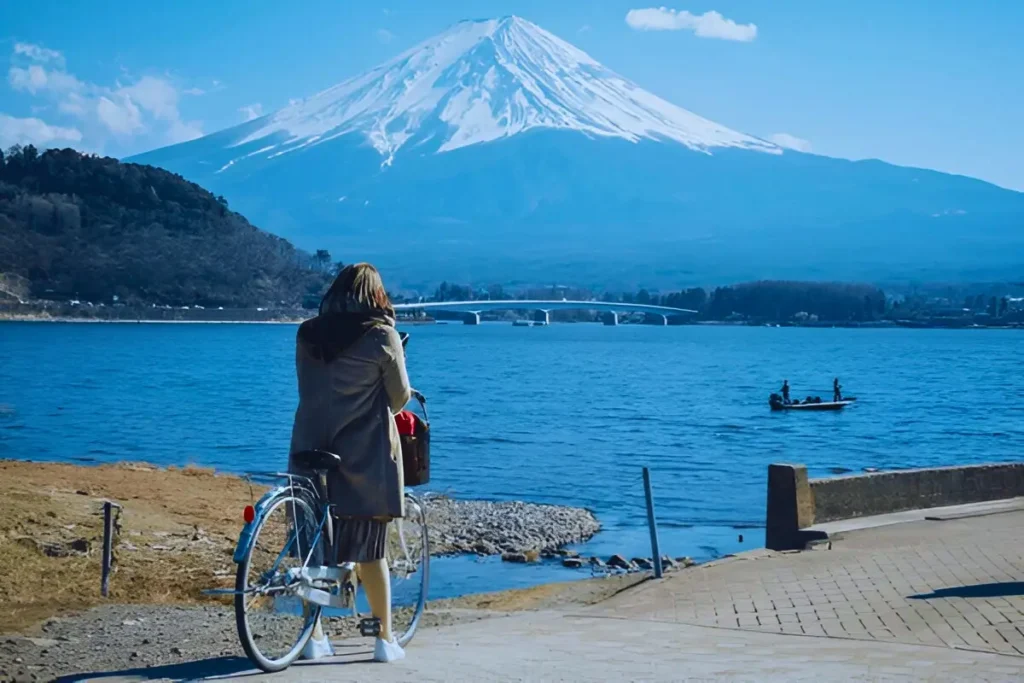
If you are able to escape the crowded hotspots, there are a ton of less touristy places in Japan that are sure to do the trick. Now, while you could even go the pilgrimage route or join up for a nature hike, Japan is also full of fewer-travelled places to visit that will immerse you even more in the culture. Here’s my own take on several of the coolest off-the-beaten-path places I came across during my travels
1. Ouchi-juku
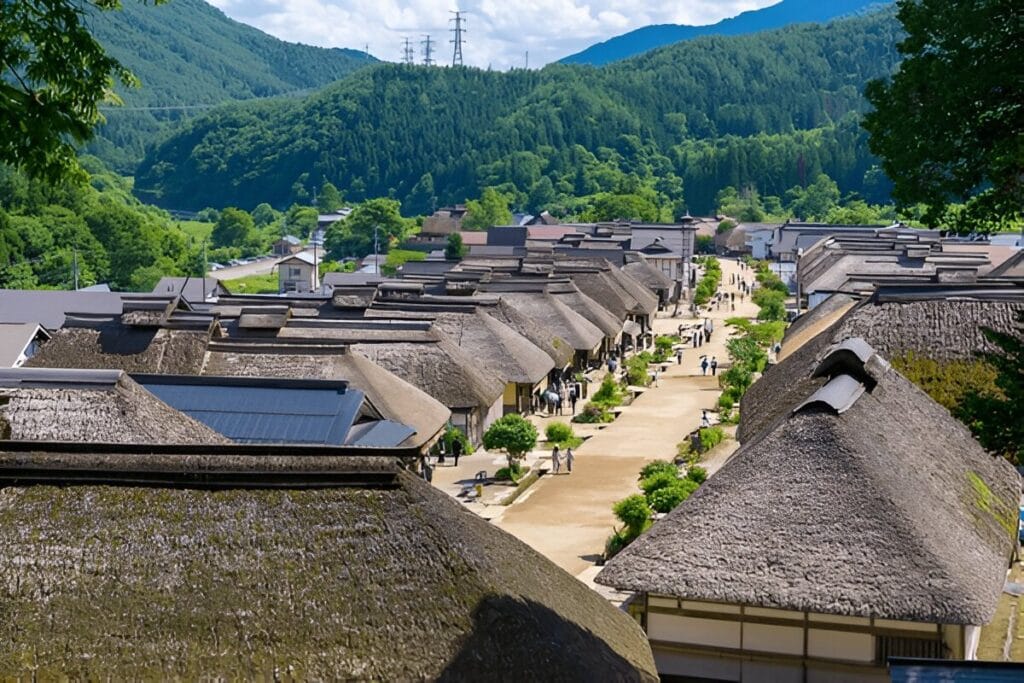
Ouchi-juku is a beautiful post-town in Fukushima Prefecture’s mountains. The thatched-roof houses and greenery made me feel as if I had gone back in time. The beauty of this place is that it is so simple, no big crowds, just quiet streets with local stores. I suggest attempting negi soba, a local delicacy in which long green onions act as chopsticks. It was such an authentic Japanese experience.
My Experience: Strolling through the village in light snowfall, watching the thatched-roof houses covered in snow like a fairy tale setting.

Best Moment: Stopped at a small shop where the owner served me negisoba (soba with green onions), a local delicacy, while I chatted with the friendly shopkeeper about village life.

Travel Tips:
- Best Visit Time: Winter turns Ouchi-juku into a fairy-tale snow-topped hamlet, but it’s stunning in spring and fall, too.
- Location: Ouchi-juku in Fukushima Prefecture is reachable by train and bus from Tokyo.
- How to Go: Take the JR Tohoku Shinkansen to Aizuwakamatsu Station and transfer to a bus bound for Ouchi-juku.
- Where to Stay: The village has traditional ryokan inns.
- Top Attraction: The famous thatched-roof homes and the charming pedestrian walkways.
- Travel Advice: Bundle up in winter, when temperatures can plummet.
2. Nakasendo Trail

The Nakasendo Trail: Exploring A Slice Of Ancient, Japanese History This historic pathway links Kyoto to Tokyo, passing through preserved post towns such as Magome and Tsumago. My days were filled with wandering by ancient inns, verdant woods and historic villages, immersing me in Japan’s deep history with every step.
What is beautiful about this trek is the tranquillity of the steppe, away from the standard beaten path of tourists. The absence of tour groups allowed me to fully relish the trail’s historical charm.Walking the Nakasendo Trail is an excellent less touristy places in Japan destination for those who appreciate peace and quiet.
My Experience: Experience of hiking the historical Nakasendo Trail from Magome to Tsumago through a quiet forest, feeling completely immersed in nature.

Best Moment: A stop at a traditional teahouse on the way and an old man and woman offered me fresh tea and homemade sweets while they recounted the history of the trail.
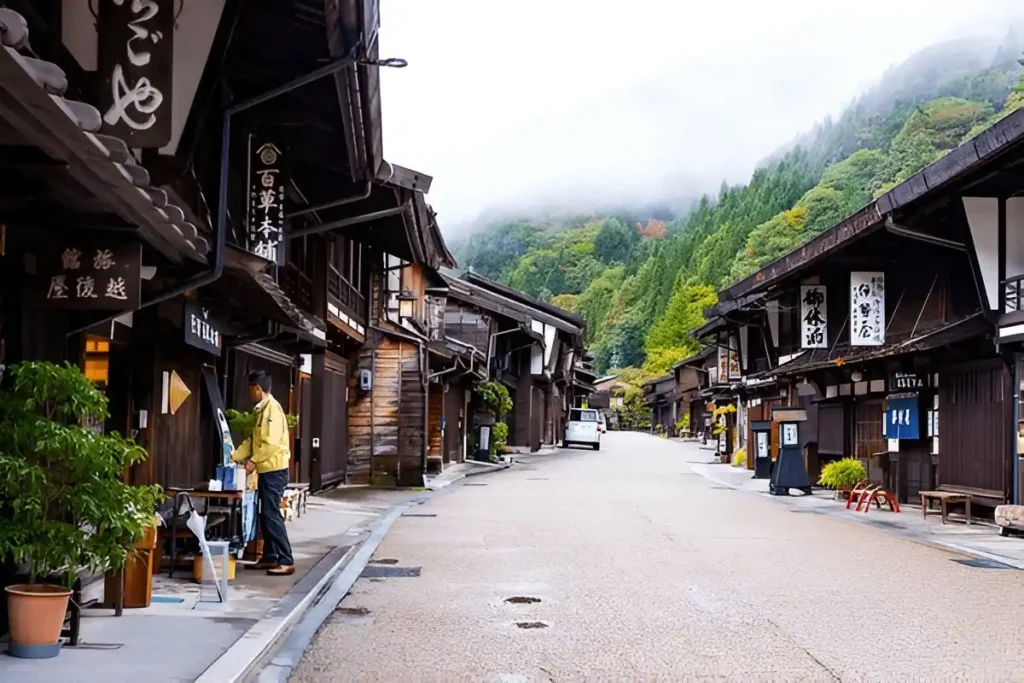
Travel Tips:
- Best Time to Visit: Spring and fall offer excellent hiking conditions, as well as stunning foliage.
- Location: The trail passes through several towns, stretching from Nagoya to the Kiso Valley in Nagano Prefecture.
- How to Go: Take the JR Chuo Line from Nagoya to Nakatsugawa Station, then a bus to Magome.
- Where to Stay: In Magome and Tsumago, stay in ryokan lodgings.
- Top Attraction: The preserved post towns and scenic trails.
- Travel Advice: During the trek, wear comfortable hiking shoes, as sections of the trail are steep.
3. Rishiri Island
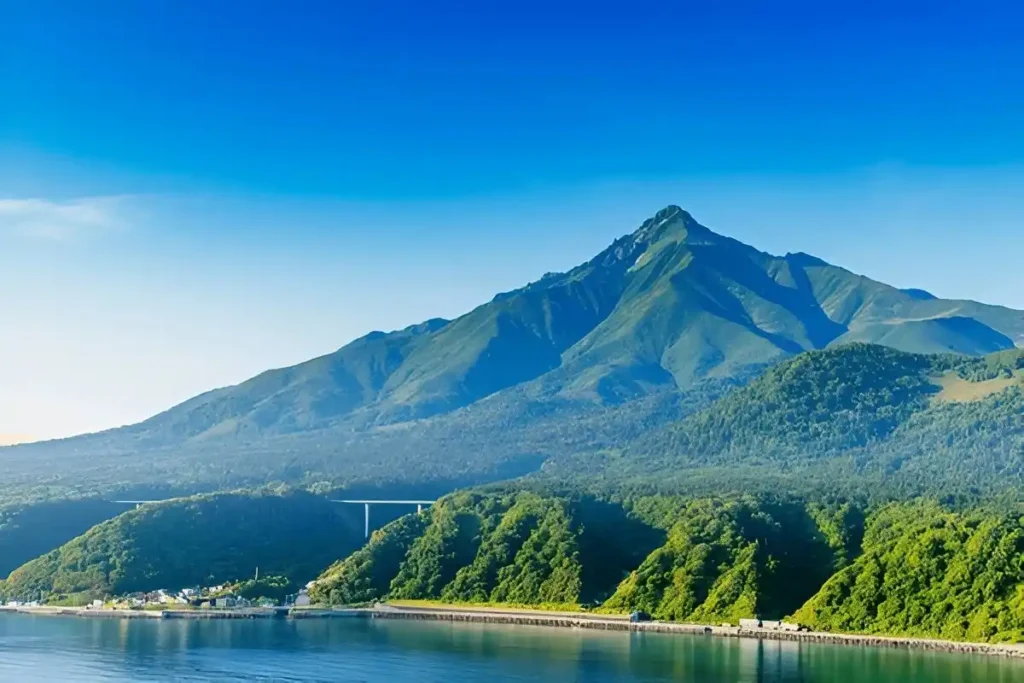
Rishiri Island, off the northern coast of Hokkaido, boasts spectacular views of Mount Rishiri and untouched nature. A beautiful getaway destination that’s off the beaten path, this tranquil island is the perfect retreat from the throngs. My daytime hours were spent biking around the island, perusing local fisher towns, and hiking up Mount Rishiri for breathtaking panoramic views.
The pristine nature and serene vibe makes it one of the less touristy places in Japan worth visiting. The island’s natural beauty and serene vibe are a welcome relief from more overcrowded getaways. Rishiri Island is an undiscovered gem for people looking for a tranquil getaway.
My Experience: Hiking Rishiri Mount, where people view the panoramic view of the island and surrounding ocean.
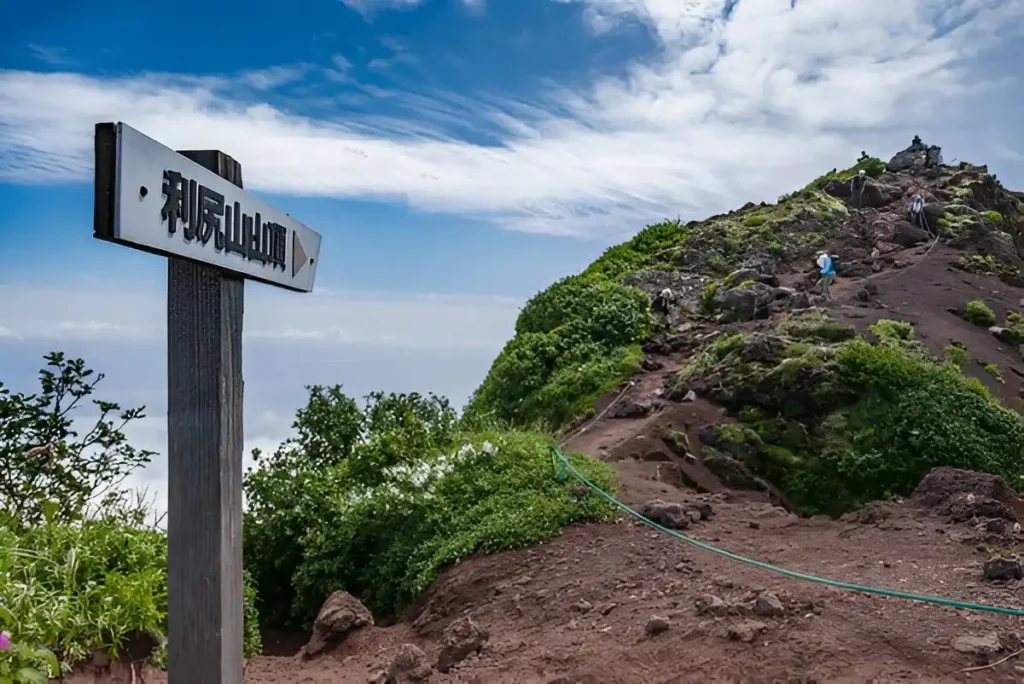
Best Moment: After the hike, I rode my bike around the island, exploring remote, quiet beaches and listening to the waves crashing against the shore, away from the crowds.

Travel Tips:
- Best Time to Visit: Summer (June-August 1) has the ideal weather for outdoor adventures and hiking.
- Location: Rishiri Island is part of Hokkaido, Japan’s northernmost island.
- How to Go: Fly from Sapporo to Rishiri Airport; take a bus or taxi to your lodging.
- Where to Stay: There are guesthouses and small inns on the island.
- Top Attraction: Hiking Mount Rishiri and cycling around the island.
- Travel Advice: Bring solid footwear for hiking, as well as clothes for quickly changing weather.
4. Koya-san
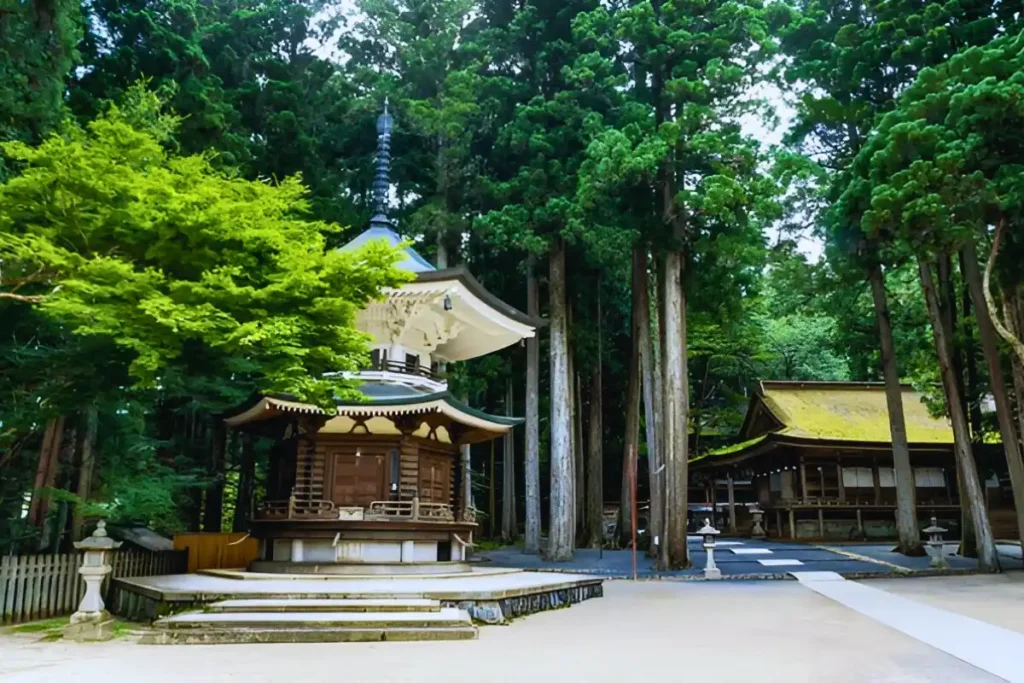
Koya-san, the spiritual center of Shingon Buddhism, is one of the most serene and transformative places I’ve ever been. A stay in a temple lodge (shukubo) meant that I could fully experience the monastic way of life, taking part in meditation and rituals. Its peaceful environment and Okunoin cemetery provided calm, escape from a busy world.
The calm and reflection of Koya-san made it unique in a way, and the experience was all the more special for its relative lack of tourists. Koya-san really is one of the less touristy places in Japan for those looking for peace and spirituality.
My Experience: Attending an early morning prayer ceremony at a temple lodge (shukubo), with monks chanting around you and the smell of incense.
Best Moment: After the ceremony, I wandered through the Okunoin Cemetery, where mist settled around the towering cedar trees for a mystical, peaceful atmosphere.
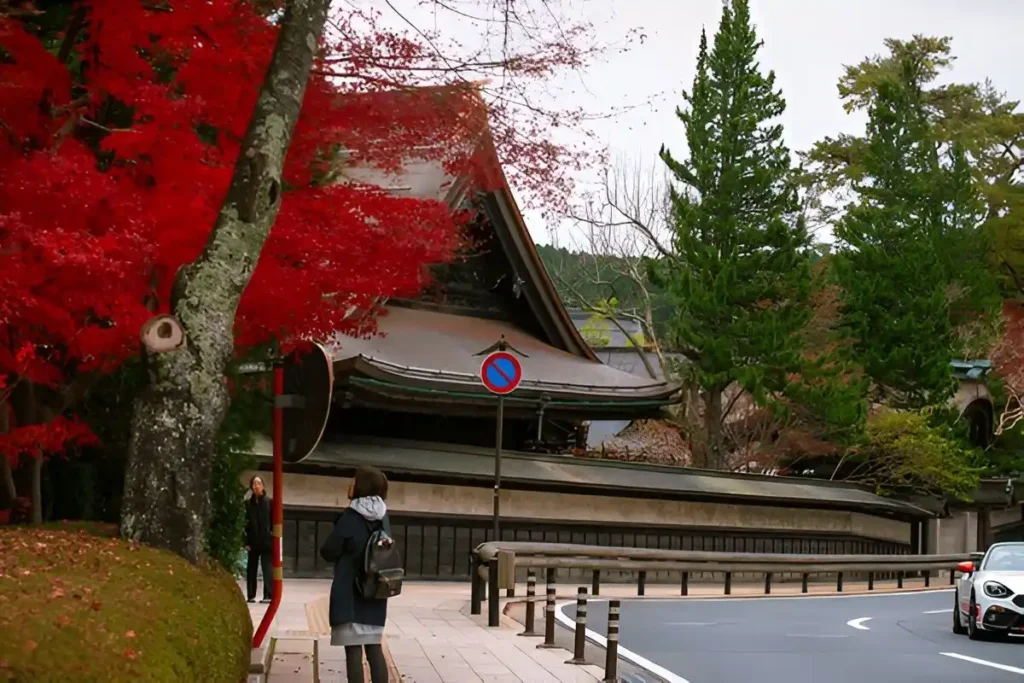
Travel Tips:
- Best Visit Time: All year round, but spring and autumn have lovely weather.
- Location: Koya-san is in Wakayama Prefecture, 2 hours from Osaka.
- How to Go: Travel on the Nankai Koya Line from Namba Station to Koya-san Station, then take a bus to your accommodation or walk.
- Where to Stay: Book a temple lodge for a taste of traditional monastic life.
- Top Attraction: Okunoin Cemetery and the lovely temple complex.
- Travel Tip: Be mindful of the local customs and participate in the rituals to make the most of the experience.
5. Iya Valley

Iya Valley is a secluded mountain area famous for its deep gorges, ancient vine bridges, and pristine wilderness. Then came the mesmerizing Kazurabashi vine bridges of the valley, wrapped still in the slender green vinesI felt completely locked in. Iya Valley, unlike other favored nature destinations in Japan, has mostly avoided mass tourism. It made it one of the less touristy places in Japan and didn’t feel like a touristy spot at all, which made it feel like a hidden paradise.
My Experience: Crossing the Kazurabashi vine bridge and its swaying motion beneath me as I was surrounded by greenery.

Best Moment: Enjoying absolute solitude and tranquility in a remote hot spring in the valley, with the river flowing below and the mountains around.
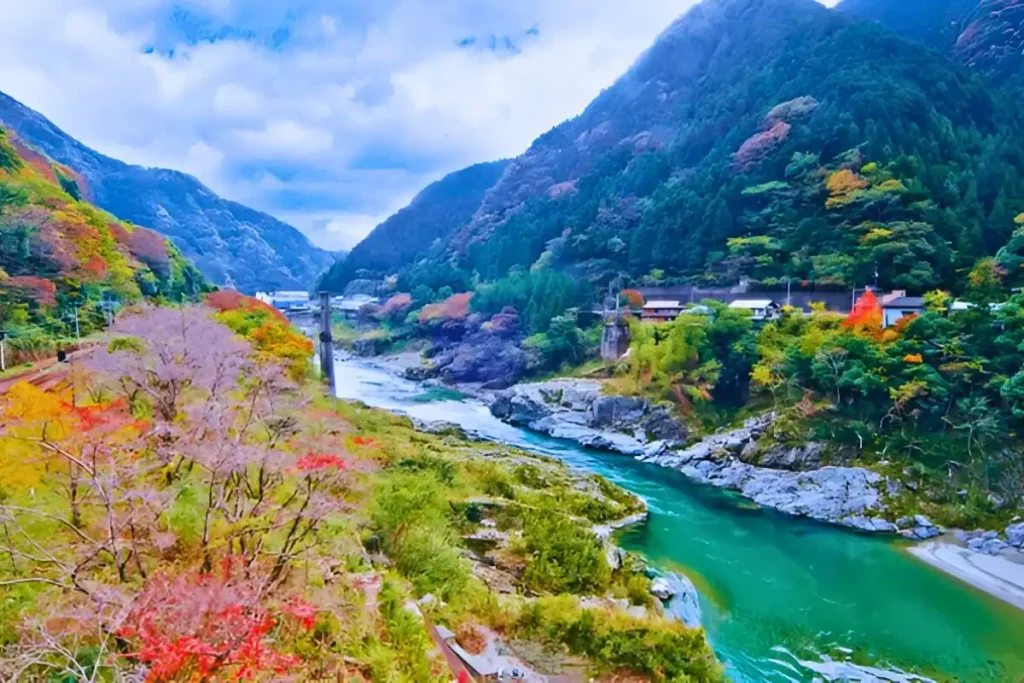
Travel Tips:
- Best Visit Time: Fall colors are gorgeous, but spring and summer are great for hiking and exploring as well.
- Location: Iya Valley is in Tokushima Prefecture on Shikoku Island.
- How to Go: Take the JR Tosa-Kochi Line to Awa-Ikeda Station, then take a bus or rent a car to explore the valley.
- Where to Stay: Ryokan and guesthouses provide an authentic experience in the valley.
- Top Attraction: The Kazurabashi vine bridges and scenic hiking trails.
- Travel Advice: Rent a car for the most convenient access to the valley’s remote areas.
6. Tottori Sand Dunes Conan
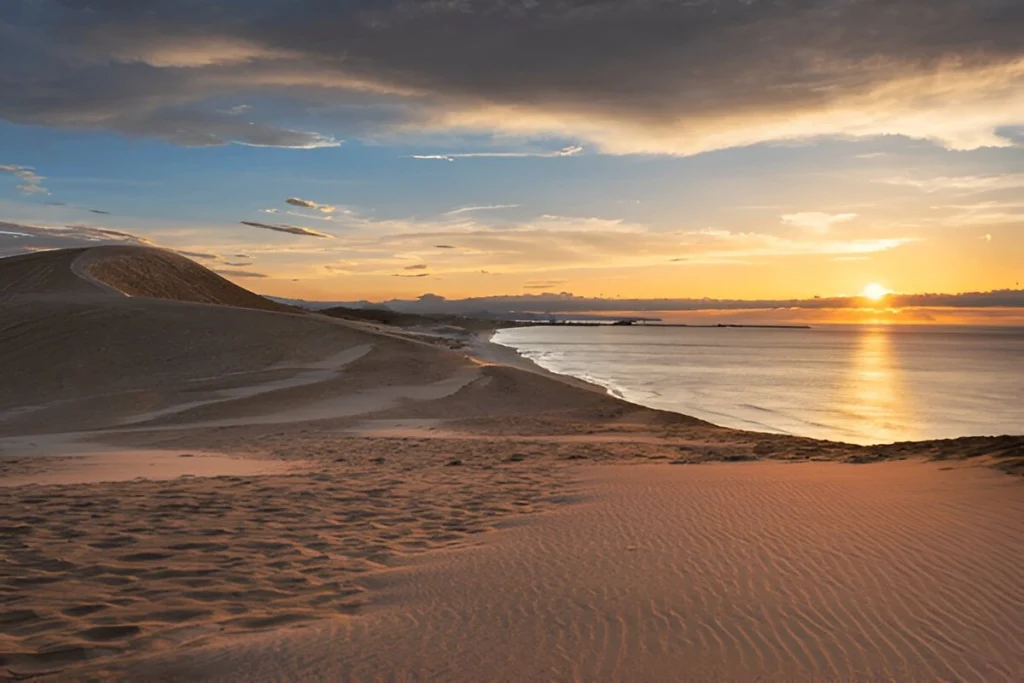
Tottori Sand Dunes Conan is a different type of beach located on the Sea of Japan, where you’ll find miles of sand dunes, and can go for an exhilarating sandboarding experience. Tottori’s dunes produce a desert sensibility in Japan, unlike its more popular beaches. My time during the day involved trying out sandboarding and visiting the Sand Museum, where there were sand sculptures made with much detail.
Tottori’s unique charm is what makes it such an underappreciated jewel; there’s really nothing quite like it. It’s one of the less touristy places in Japan worth the discovery, due to its calm surrounding environment and the absence of large crowds, providing a refreshing and altogether different adventure.
My Experience: Walking through the vast sand dunes of Tottori, which felt like being in a desert landscape far from the typical Japanese scenery.
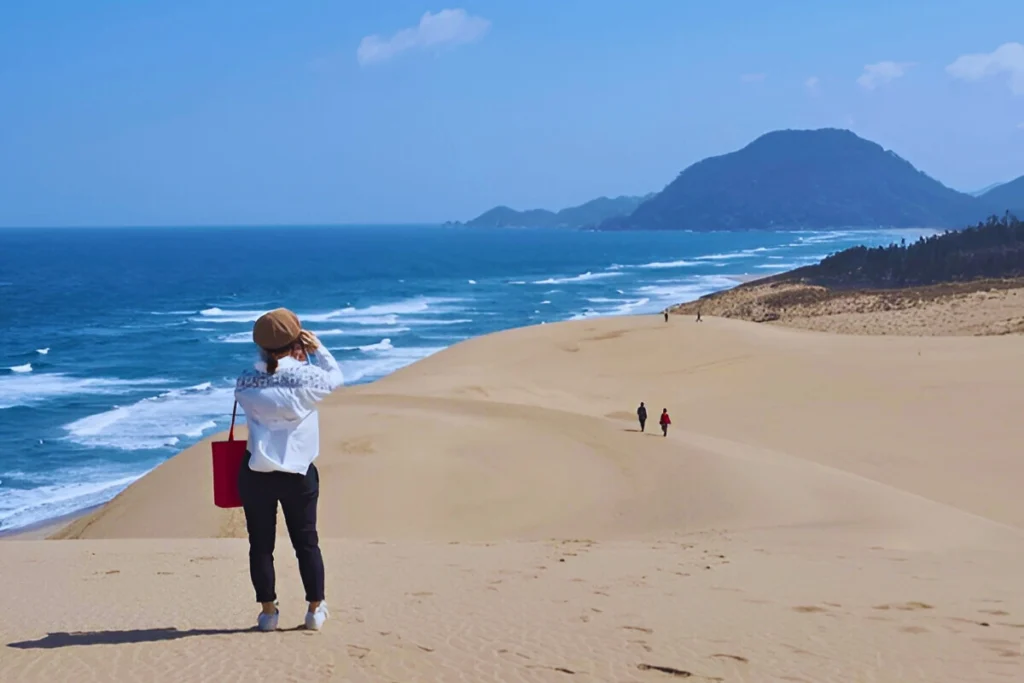
Best Moment: I climbed to the top of one of the dunes and watched the sunset, where the orange glow lit up the sand and the sea in the distance, creating a peaceful, almost surreal scene.
Travel Tips:
- Best Time to Visit: Spring and autumn offer mild temperatures.
- Location: Tottori Sand Dunes (Tottori prefecture)
- How to Go: From Tottori City, take a bus or taxi to the sand dunes.
- Where to Stay: Hotels and ryokan in Tottori City or nearby the dunes.
- Top Attraction: Sandboarding and the Sand Museum
- Travel Advice: Use sunscreen and protective wear, as the sand can become extremely hot during summer.
7. Kusatsu Onsen
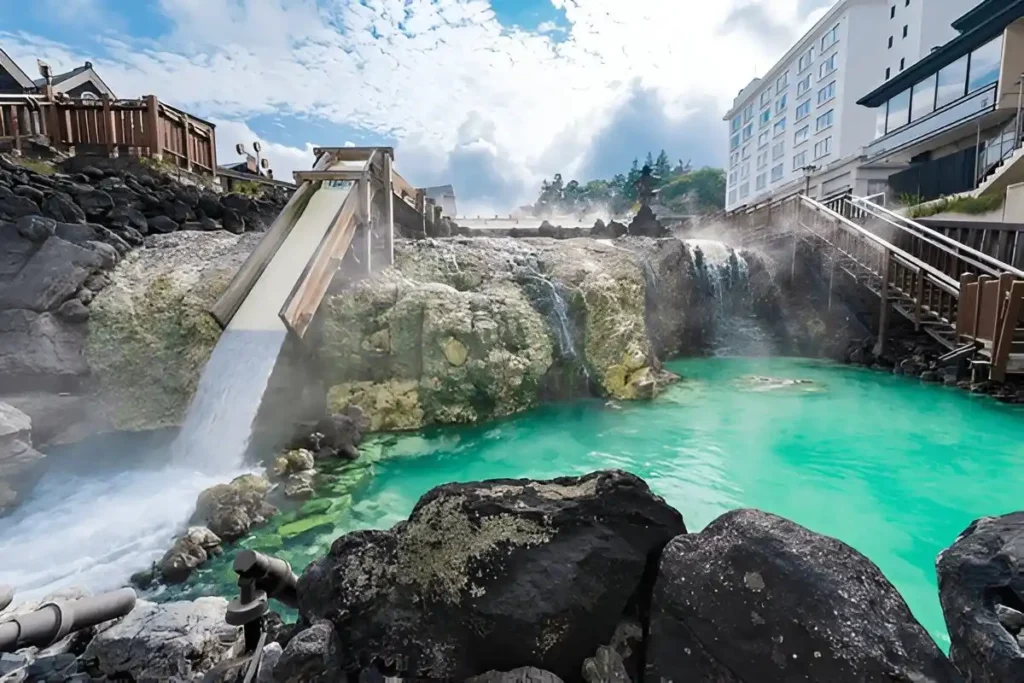
With Kusatsu Onsen being a hot spring hotspot yet less known than large onsen towns like Hakone. The town’s sulfuric hot springs are considered healing. The town’s famous Yubatake (hot water field) was on display during my visit, and I spent my time relaxing in the public baths. Kusatsu has the perfect combination of tradition and tranquillity making it a great example of the less touristy places in Japan.
My Experience: Visiting Shirakawa-go, a UNESCO World Heritage village of thatched-roof farmhouses in the surrounding mountains.

Best Moment: I stayed in a traditional farmhouse, where I learned to cook hoba miso (miso grilled on magnolia leaves) with the family in the area. This was a fun, immersive cultural experience.
Travel Tips:
- Best Visit Time: Winter is perfect for hot springs soaking, but it’s gorgeous any time of year.
- Location: Kusatsu Onsen is located in Gunma Prefecture, about 3 hours from Tokyo.
- How to Go: Take the JR Joetsu Shinkansen to Takasaki Station, then switch to a bus to Kusatsu.
- Where to Stay: For the complete onsen experience, stay in a ryokan.
- Top attraction: The Yubatake and public onsen.
- Travel Advice: Be sure to take advantage of the available foot baths throughout the town.
8. Shimanto River
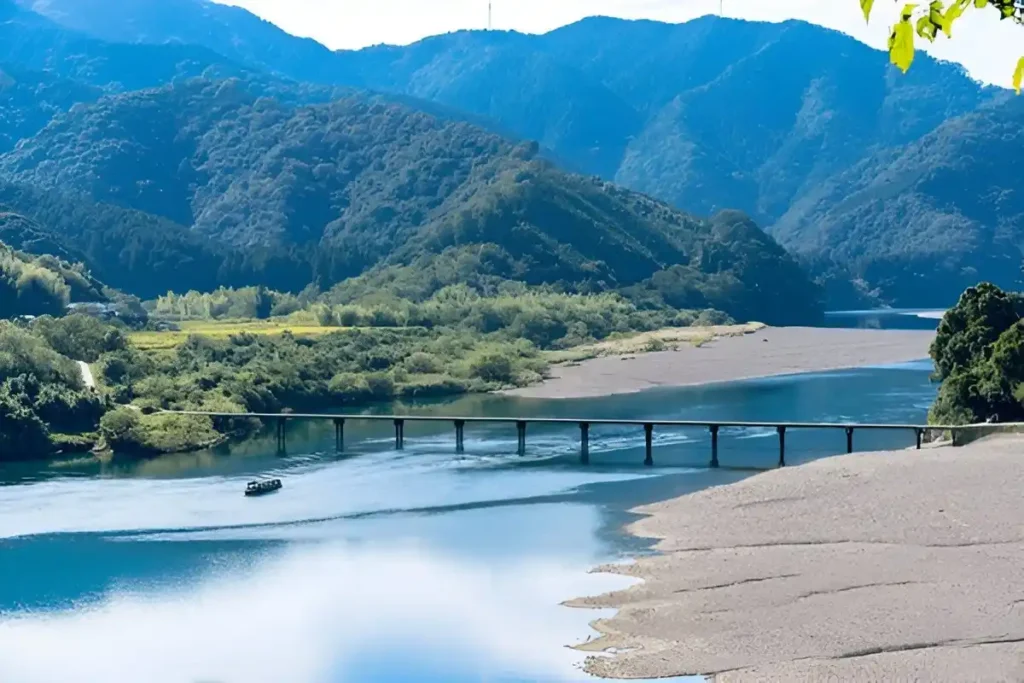
Shimanto River is one of Japan’s four clean rivers, surrounded by beautiful nature. I embarked on a tranquil boat ride along the river, sailing through verdant green valleys, past rural civilization. The river’s tranquility, clarity and natural setting were all second to none. One of the less touristy places in Japan for nature lovers and those looking for some peace and quiet, the Shimanto River isn’t plagued by tourists.
My Experience: Soaking in the steaming hot spring baths of Kusatsu Onsen, one of Japan’s most famous onsen towns, but still tranquil and not overrun with tourists.
Best Moment: Strolling the Yubatake (hot water field) in the center of the town, the steam billowing from the hot springs created an almost mystical atmosphere around me as I took in the natural beauty.
Travel Tips:
- Best Time to Visit: The spring and the autumn have mild weather and gorgeous foliage.
- Location: Shimanto River is located in Kochi Prefecture, Shikoku Island.
- How to Go: Take a train or bus to the river from Kochi City.
- Where to Stay: Guesthouses line the river, providing an authentic experience.
- Top Attraction: Boat rides and countryside surrounding the grounds.
- Travel advice: Relax and rent a bicycle to ride along the riverbanks.
9. Aso Volcano
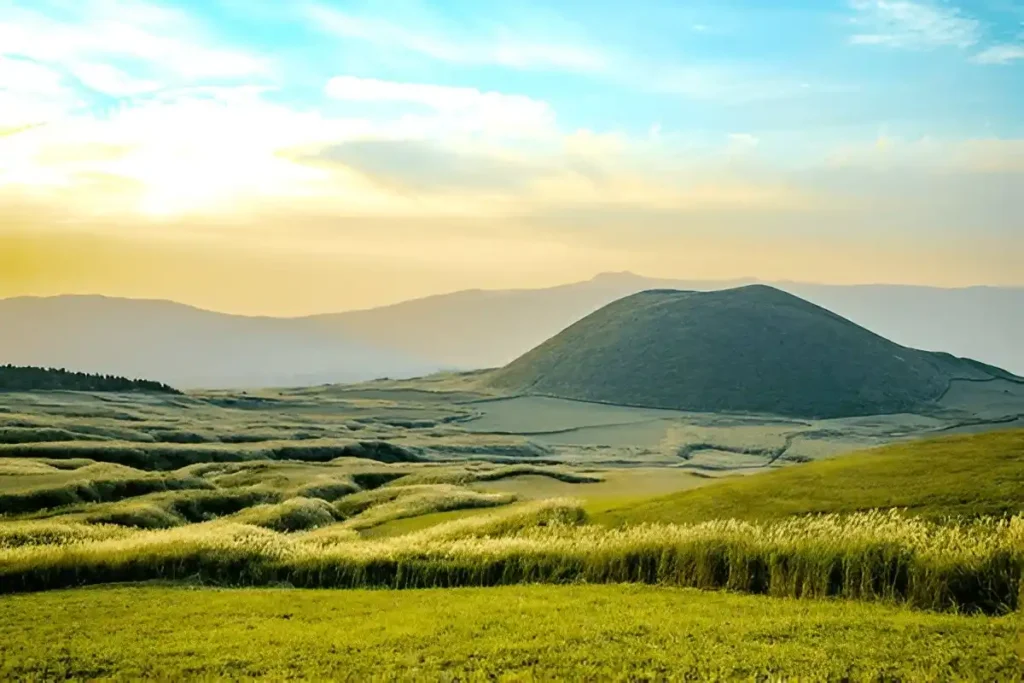
Aso Volcano in Kumamoto Prefecture is one of the world’s largest active volcanoes — and it’s an out-of-this-world experience. The expansive caldera and its steaming crater offer a rare view of Japan’s volcanic landscape.I had the opportunity to take a gondola ride to the top and look at the sulfuric steam emerging from the crater — which was stunning to behold.
The surrounding Aso Kujū National Park is also picturesque with beautiful hiking trails. Despite its dramatic nature, Aso is a relatively small volume tourist destination compared with other volcanic areas in Japan, making it one of the less touristy places in Japan.
My Experience: On a calm day, it’s possible to sit at the edge of Lake Kawaguchi, with a perfect reflection of Mount Fuji in the water. It was one of the most peaceful landscapes I’ve ever seen.
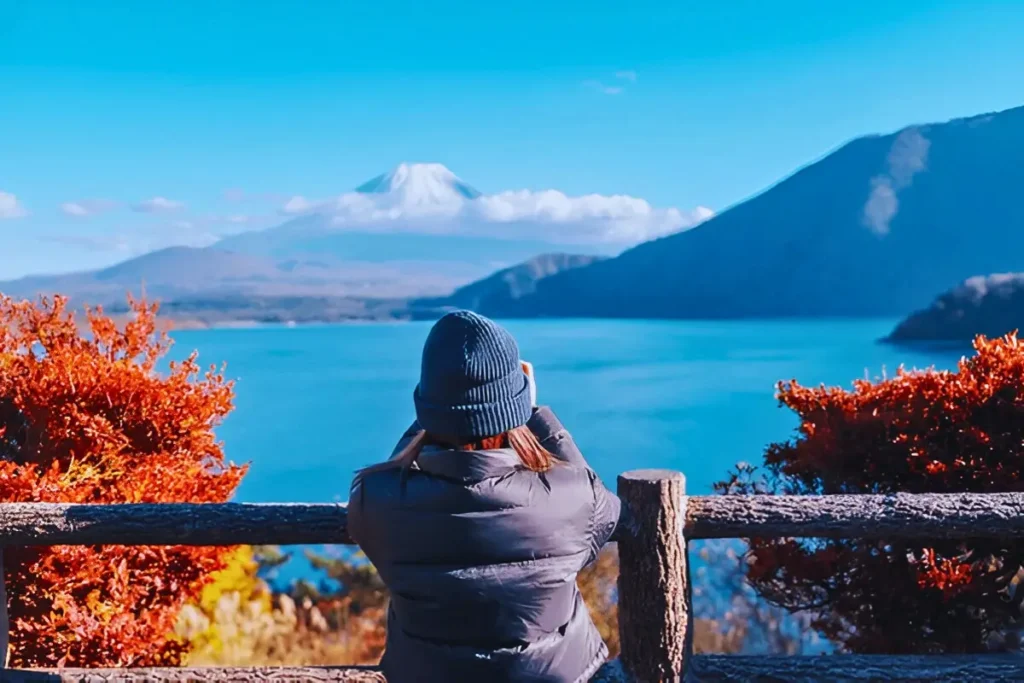
Best Moment: I rented a bicycle and rode around the lake, stopping to see the view of Mount Fuji, enjoying the nature around me without the crowds of people.

Travel Tips:
- Best Time To Visit: Spring and fall are the best times for hiking when temperatures are mild and foliage is beautiful.
- Location: Kumamoto Prefecture, Kyushu Island
- How to Go: From Kumamoto City, take a train or bus to Aso Station, then rent a car or take a local bus to the volcano.
- Where to Stay: In nearby towns Aso and Minami-Aso, there are ryokan and guesthouses.
- Top Attraction: Hiking in the vicinity of the volcano, as well as the cable car to the crater for panoramic views.
- Travel Advice: Before going, check what the volcano has been up to, as the crater area can close at times for safety reasons.
10. Naoshima island
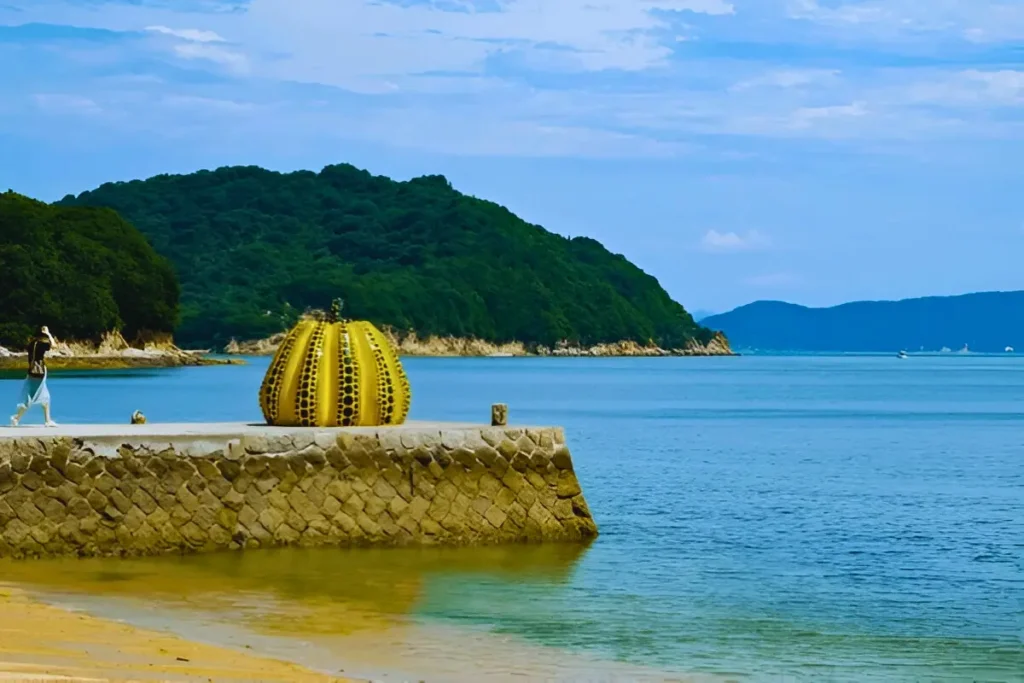
Naoshima is one of the most unique art islands I have ever visited. It is not only famous for its artworks but also for the stunning blend of natural beauty and modern architecture. This small island, located in the Seto Inland Sea, feels like a paradise for art lovers and travelers alike. The Benesse House Museum, Chichu Art Museum, and Yayoi Kusama’s iconic pumpkin sculpture immediately caught my eye, enhancing the island’s charm..
My Experience: Walking along the quiet island paths and suddenly coming across breathtaking art installations that seamlessly blend with nature.

Best Moment: Sitting inside the Chichu Art Museum, admiring Monet’s Water Lilies illuminated only by natural light, creating an atmosphere so serene that time seemed to stand still.
Travel Tips:
- Best Visit Time: Spring and autumn are the best for outdoor activities, as temperatures are more comfortable.
- Location: Tottori Sand Dunes is in Tottori Prefecture on the western coast of Japan.
- How to Go: From Tottori Station, take a bus or taxi to the sand dunes and museum.
- Where to Stay: Stay in Tottori City for a range of accommodations, or choose a seaside ryokan for a more peaceful experience.
- Top Attraction: Sandboarding, camel rides, and the Sand Museum with its stunning sculptures.
- Travel Advice: Wear comfortable clothes and bring sunscreen, as the dunes can get hot in the summer.
Visit other places in Japan: Arashiyama Bamboo Grove at Night: An Unforgettable Glow Under the Moonlight
11. Shirakawa-go
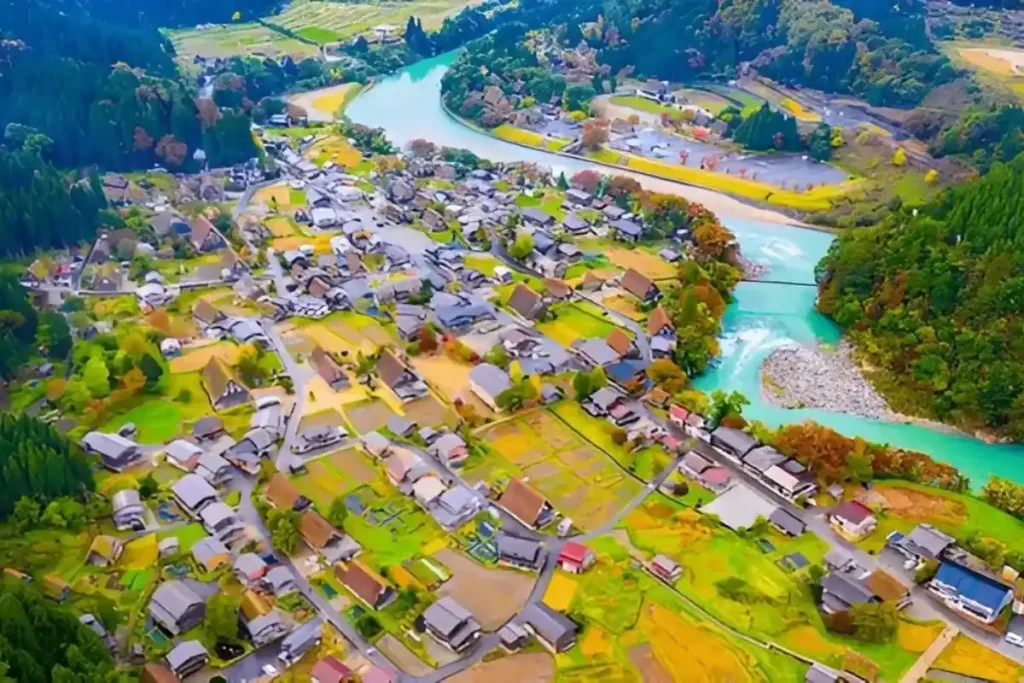
Located in the Japanese Alps, Shirakawa-go is a UNESCO World Heritage site known for its traditional gassho-zukuri farmhouses. Perched within the mountains of Gifu Prefecture, this village is a journey back in time, a window into rural Japan as it was years ago.
I got to spend the night in a gassho-zukuri farmhouse (one of the classic wooden houses of that region) and it was such an a unique experience. In winter, the cottages in the village are covered with snow, which makes for a picturesque scene. Shirakawa-go ranks among Japan’s in places in Japan that are less touristy, thus making it an ideal place for those looking for peace of mind and great culture.
Experience: Roaming the old merchant streets of Hida Takayama to see the beautifully preserved Edo-period buildings, which felt so much like a time machine.
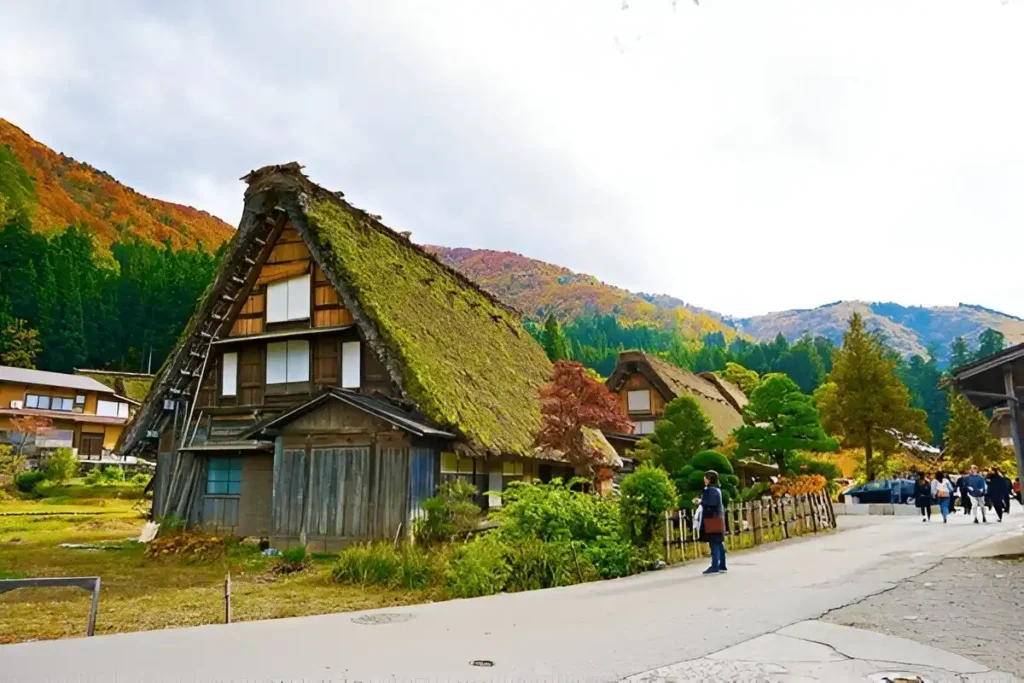
Moment: I had a hearty, local meal of Hida beef at a small family-run restaurant, chewing on the rich, tender cuts of meat as I talked to the animated owners about the region’s history.sectetur adipiscing elit. Ut elit tellus, luctus nec ullamcorper mattis, pulvinar dapibus leo.
Travel Tips:
- Best time to Visit: Winter for a magical snow-covered village, but spring and autumn are equally lovely for hiking and photography
- Location: Shirakawa-go is located in Gifu Prefecture, about 1.5 hours from Takayama.
- How to Go: Take a bus from Takayama or Kanazawa to the village, or rent a car for more flexibility.
- Where to Stay: For an authentic experience, sleep in a traditional gassho-zukuri farmhouse.
- Top Attraction: The gassho-zukuri houses, the Shiroyama Observatory, and the tranquil winter scenery.
- Travel Advice: Prepare for cold weather in winter, as the village is quite isolated and can be snowed in.
12. Hida-Takayama

Which, although often forgotten in the shadow of the more famous Takayama and Shirakawa-go, is full of history, culture — and jaw-dropping natural beauty. I passed time wandering its well-preserved Edo-period old town, stopping by traditional sake breweries and collecting local delicacies such as Hida beef.
Takayama has a fine morning market, where local artisans come to sell their products.This quaint town, with its historical streets and tranquil atmosphere, embodies the spirit of the less touristy places in Japan that make the country so special.
Experience: Walking the beautiful Kamikochi valley, a picturesque spot in the Japanese Alps with rivers so clear and forests so vivid, it felt special.
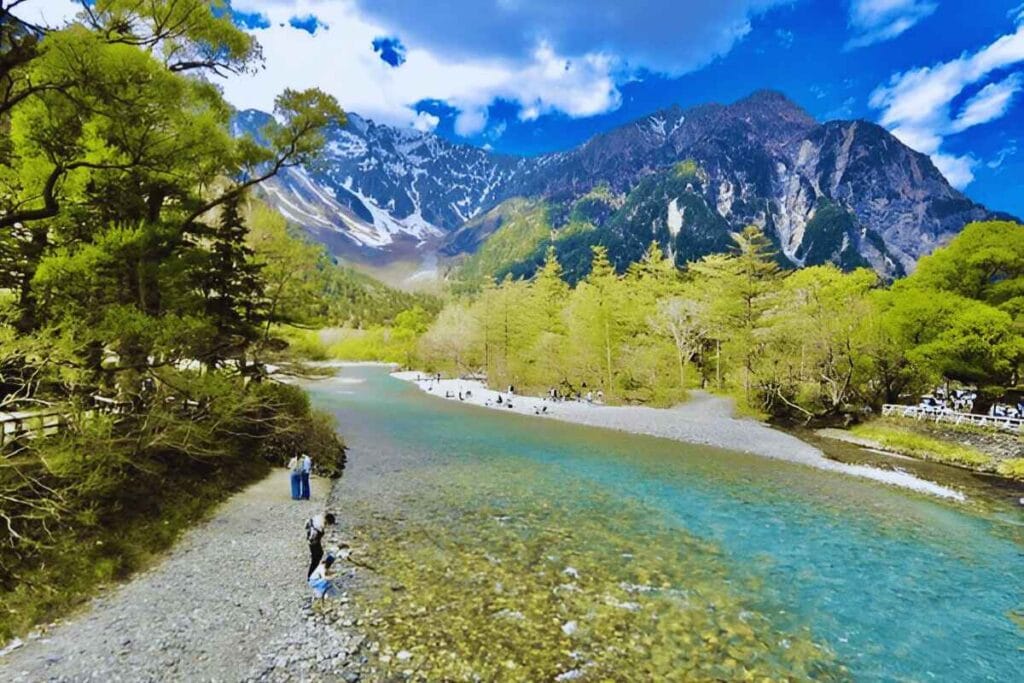
Moment: Stopping by the Azusa River, I gazed at towering mountainshere and felt alone with nature — not a tourist in sight.
Travel Tips:
- Best Time To Visit: Spring and fall are best, weather- and foliage-wise.
- Location: Gifu Prefecture, in the Japanese Alps.
- How to Go: From Nagoya, take the JR Hida Limited Express to Takayama Station.
- Where to Stay: For a unique experience, stay in a ryokan or a traditional guesthouse.
- Top Attraction: Old town, morning markets and Hida beef restaurants.
- Travel Advice: If you go for a walk around the old town, do so early in the morning to escape the bustling crowds and soak in the quiet ambiance.
13. Yakushima
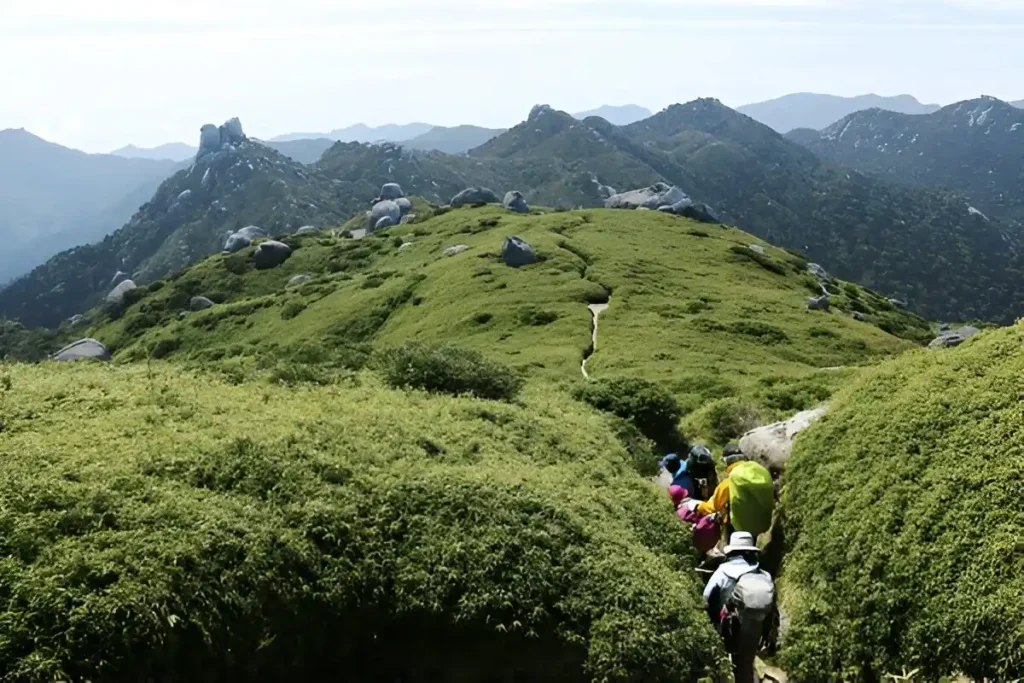
Yakushima is a small island off the coast of Kagoshima Prefecture, famous for its ancient cedar forests, some of which are millennia old. I trekked through these ancient forests and saw the famous Jomon Sugi tree, one of the oldest and most intimidating trees in Japan.
Incredible landscape, diverse flora and fauna, wonderful hiking trails. A unique ecosystem with lush rainforests, waterfalls, and quiet beaches, Yakushima is one of the less touristy of Japan where you can commune with nature.
Experience: Nara is better known for its centuries-old ancient temples and free-roaming deer, but I visited the lesser-known Yoshikien Garden, where I appreciated the calm and the beautiful views without the large mobs of visitors.
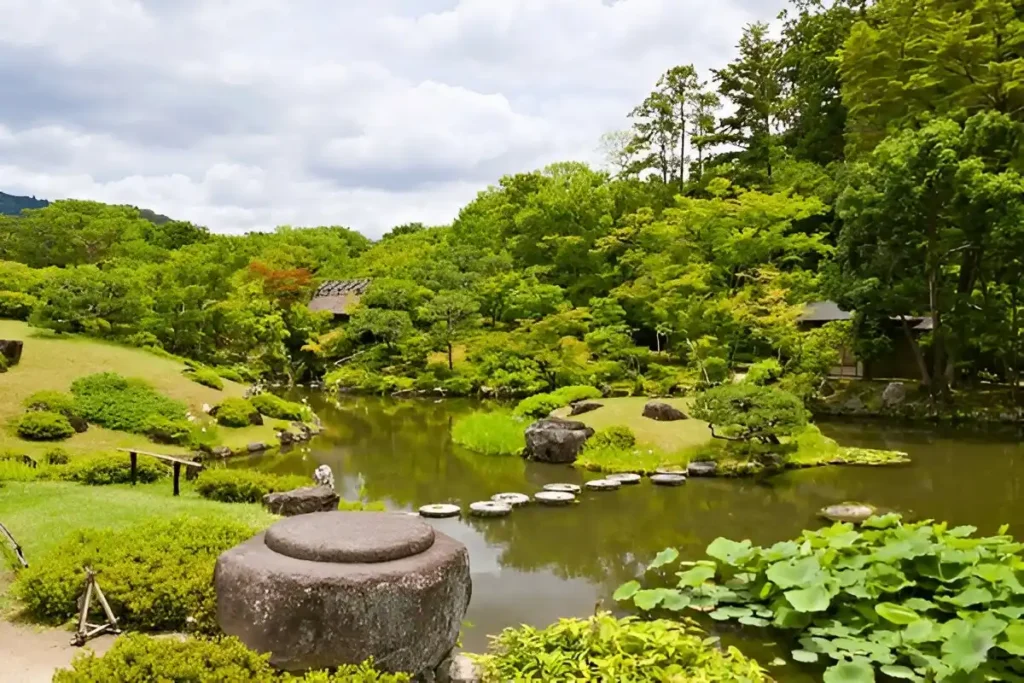
Moment: I was sitting on the side of the pond in the garden, watching the koi fish drifting lazily around the waters, and enjoying the tranquility that only a quiet, calm garden can bring.

Travel Tips:
- Best Time to Visit: The best time to visit is in the spring and autumn months, when the weather is best for trekking.
- Location: Yakushima is off the southern coast of Kyushu.
- How to Go: Fly from Kagoshima to Yakushima Airport; then rent a car or take local buses to get around.
- Where to Stay: The island has a number of guesthouses and eco-lodges.
- Top Attraction: Trekking the ancient cedar forests visiting the Jomon Sugi tree
- Travel Advice: Come prepared with good hiking equipment, as the trails can be demanding and the weather can turn quickly.
14. Kanazawa
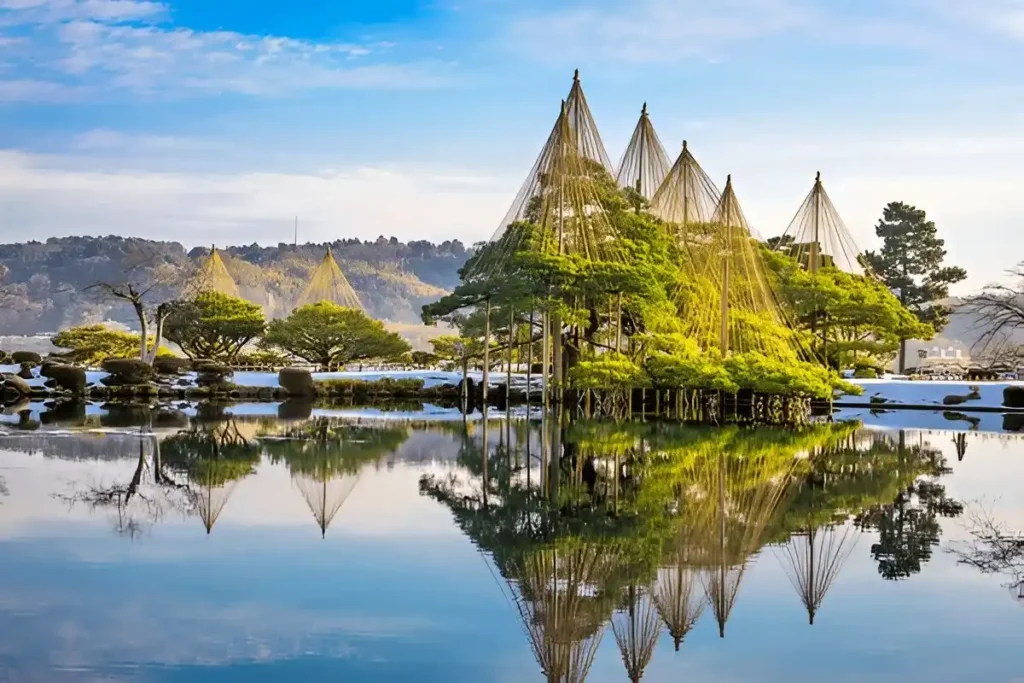
Known as a smaller and quieter Kyoto, this great little hidden treasure is located in Ishikawa prefecture. I visited Kenrokuen Garden, Japan’s most famous garden, and strolled through the well-restored samurai zone, absorbing the town’s historic atmosphere.
Kanazawa also has the lively food markets, I especially loved the Omicho Market, where I ate fresh seafood. One of the less touristy places in Japan, the town is a mix of culture and tranquility, with the added bonus of a relatively low footfall of tourists. It provides a cultural experience without the headache of big crowds, making it a great place for a getaway.”
My Experience: The island, where I visited ancient gold mines, breathtaking coastlines and traditional performing arts such as the legendary Kodo drumming.
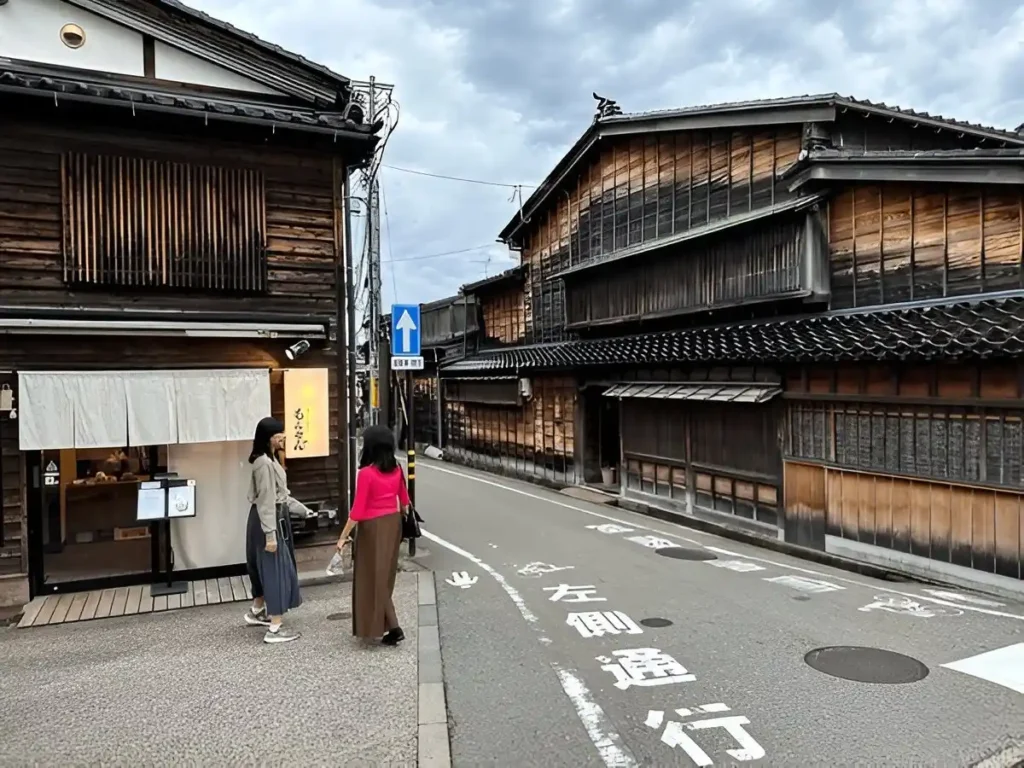
Best Moment: I traveled to one of the isolated beaches, and I was the only one there, enjoying the sound of the waves and watching the sunset over the sea, the sounds of the Kodo drums fading in the background.

Travel Tips:
- Best Time to Visit: Spring for the cherry blossoms or autumn for the stunning foliage
- Location: Kanazawa is in Japan’s Ishikawa Prefecture, on the country’s west coast.
- How to Go: From Tokyo, take the Hokuriku Shinkansen to Kanazawa Station.
- Where to Stay: Traditional ryokan or modern hotel in the city center.
- Top Attraction: Kenrokuen Garden, the samurai district and Omicho Market Top Attraction: Kenrokuen Garden
- Travel Advice: Sample the fresh seafood and explore the historic districts for a sense of Kanazawa’s storied past.
15. Okinawa Islands
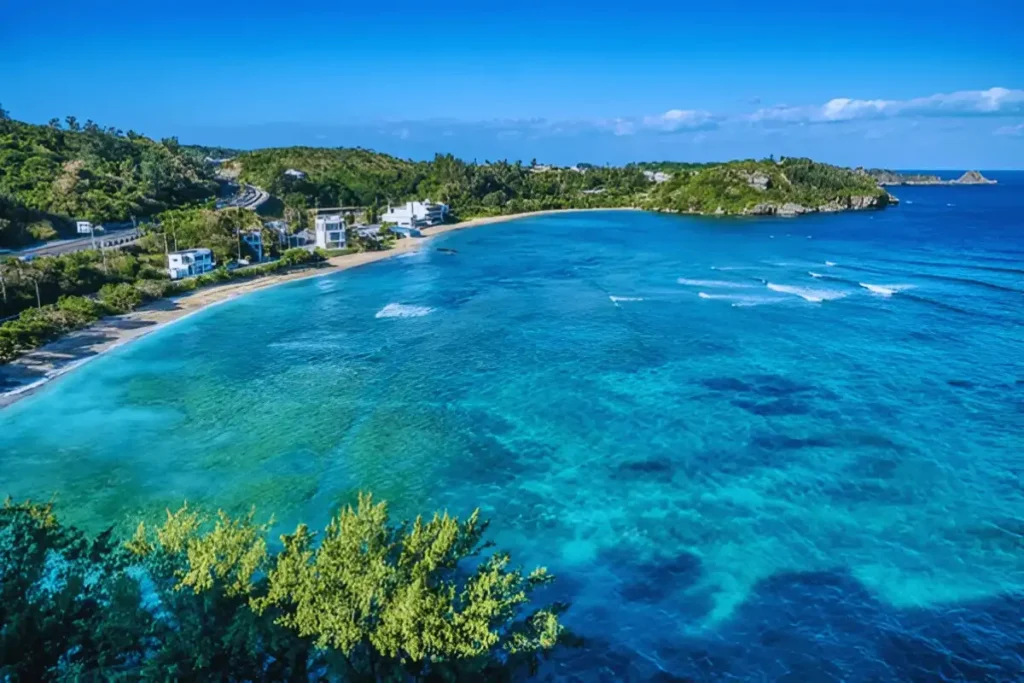
Okinawa’s main island is known for its beaches and resorts; the smaller outer islands are mostly untouched by mass tourism. I went to Ishigaki Island and Taketomi Island, their pristine beaches, traditional houses and clear waters.
As life here moves at a much more relaxed pace, these islands are an ideal escape for travelers looking for tranquility and colorful flora and fauna. And the outer islands of Okinawa are certainly amongst the less touristy spots in Japan, for a more intimate and laid back Japanese island experience.
My Experience: Trekking through the expansive wetlands of Kushiro Marsh, Japan’s biggest marshland, where I saw all kinds of birds and wildlife, and the air was pure and pristine.

Best Moment: I noticed an afternoon at the Kushiro Marsh Observatory, where I sat quietly and watched different wildlife comes in and out, feeling like I am the only one in this quiet vast land.

Travel Tips:
- Best Time to Visit: Summer (May-August) for beach activities, or spring and autumn for fine weather
- Location: The outer islands lie to the south of Okinawa’s main island.
- How to Go: Fly from Naha to Ishigaki or Taketomi and use local ferries or taxis to get around.
- Where to Stay: Sleep in local guesthouses or resort hotels on the beach.
- Top Attraction: The beaches, snorkeling and visiting traditional Okinawan villages.
- Travel Advice: Rent a bike to get around Taketomi Island; it is small and extremely photogenic.
These less touristy places in Japan provide the genuine charm of Japan and its natural beauty without the influx of tourists. These destinations give you a different, deeper insight into Japanese culture and history, travelling to less touristic locations that you won’t forget for a long time after your holiday. So get out of the tourist bubble next time in Japan and find these hidden gems yourself!
Final Thoughts:
Less touristy places in Japan are a great way to discover Japan as it provides an experience like no other to experience the breathtaking nature, great culture and the true traditions. Traveling off the beaten PATH allows you to experience hidden finds that are just as fascinating, yet much less crowded and more intimate than the popular sites. These places not only help you skip the tourist crush, they offer more tangible relationships with the land and its people.
Japan has much more to offer than the usual tourist hotspots, from the sprawling and tranquil mountain villages such as Ouchi-juku to the unspoiled beauty of Yakushima’s forests. Whether you’re trekking in ancient mountains, feeling the rejuvenating springs of hot water away from popular joints, or visiting the less travelled towns for tranquillity, you’ll discover that behind the tourist hotspots is the soul of a country (Japan) all its own.
So I urge you to get a little off the beaten path and discover the hidden beauty of these less touristy places in Japan. In exchange, you will be rewarded by the opportunity for memorable experiences, fewer crowds and all the quiet contemplation that helps make travel transformative. So, pack your bags, discover Japan’s hidden gems and make your own unforgettable adventure.

